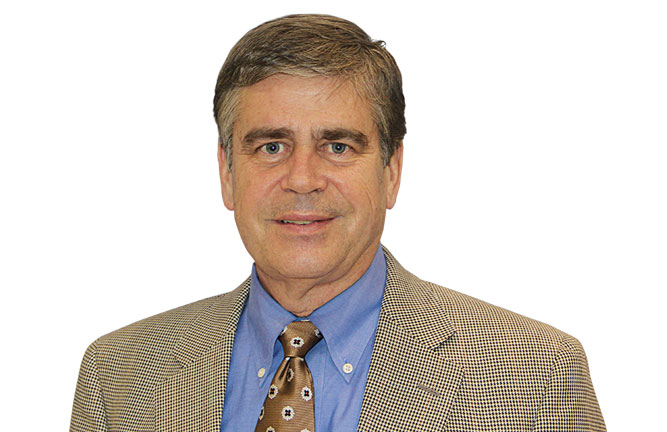The end of the overseeded grass: Transition processes
Dave Kopec, Ph.D. is a professor of turfgrass science at the University of Arizona. He has many years of research and practical experience transitioning cool season overseeded grass back to bermudagrass. Kopec can be reached at dkopec@ag.arizona.edu for more information.
Q: When is the ideal time to start the transition from overseeded grass back to bermudagrass?
The transition process should begin with the idea that the overseeded grass is gradually removed to coincide with the start of active growth of bermudagrass.
Active growth of bermudagrass consistently occurs when the nighttime low air temperature is greater than 60° F for seven consecutive days.
Bermudagrass may often green-up and grow a little before this, but it does not really “kick it in gear” until then.
The transition back to bermudagrass is a sensitive subject at many golf courses because golfers do not want any disturbances. Superintendents are often forced to conduct spring transition around the golf calendar and golfer preferences.
Q: Describe the transition process on a putting green.
Nearly all bermudagrass greens in our area are overseeded with Poa trivialis. Superintendents almost exclusively use cultural practices to transition from Poa trivialis back to bermudagrass on greens.
They start in late March with light vertical mowing once a week, to nick leaves and the elevated crowns of Poa trivialis. Fertilization with small amounts of water-soluble nitrogen, favors the bermudagrass. This is often coupled with slightly reduced irrigation levels.
Since Poa trivialis has poor heat tolerance, it gradually fades away as day length and air temperatures increase and the cultural practices thin it out.
Be careful with the intensity of verticutting on ultradwarf bermudagrass greens. They can be severely injured by aggressive verticutting.
Q: Describe the transition process on fairways.
Most of the fairways in our area are overseeded with perennial ryegrass and it can persist until early August unless it is actively removed.
Transition starts in late April by gradually lowering the mowing height from 0.5 to 0.4 to 0.3 inches over a period of several weeks. This is accompanied by fertilizing with soluble nitrogen at 0.3 to 0.5 pounds nitrogen per 1,000 square feet every two weeks.
Some superintendents aggressively verticut in late May, after the last tournament, to thin out the perennial ryegrass.
Others might use transition-aiding herbicides to selectively remove the perennial ryegrass. Each herbicide has its strengths and weaknesses, but the amount of perennial ryegrass removed is dependent on the rate of application and the daytime air temperature following application.
The higher the application rate, the higher the air temperature, the more perennial ryegrass will be removed and the faster it will turn brown.
Q: Describe the transition process in roughs.
Roughs are overseeded with perennial ryegrass and are the hardest areas to transition back to bermudagrass. It’s because the higher mowing height in the rough allows the perennial ryegrass to become well established and produce excessive shading of the bermudagrass.
Superintendents either use aggressive scalping or herbicides to force the transition back to bermudagrass. Some will apply a transition herbicide and then scalp.
Q: Anything else you would like to add?
There is interest in new and existing herbicides to remove perennial ryegrass with minimal production of necrotic, straw colored, perennial ryegrass.
Also, once every five years, the golf course should skip overseeding to allow the bermudagrass to recover. One of the shortcomings of transition herbicides is that they turn the overseeded grass a straw color, which golfers find objectionable.










